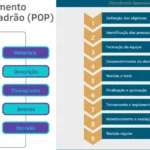Dental emergencies strike unexpectedly, often causing severe pain and emotional distress. Whether the cause is a sudden accident, infection, or structural damage to a tooth, these situations require swift and decisive intervention. Emergency dentistry focuses on stabilizing patients and alleviating pain while preventing further complications. The ability to quickly diagnose and treat these urgent issues separates emergency dental care from routine checkups or elective procedures.
In most cases, pain is the body’s first alert that something is wrong. Severe dental pain often arises from exposed nerves, infections that reach deep into the tooth, or trauma that dislodges or fractures a tooth. Emergency dentists are trained to address the source of the pain directly rather than simply masking it. Their role extends beyond treatment; it involves immediate decision-making to preserve both oral health and overall well-being.
Time is a critical factor in dental emergencies. The sooner a patient receives care, the better the chances of saving a damaged tooth or controlling an infection before it spreads. Emergency dentists rely on rapid assessments, diagnostic imaging, and specialized tools to deliver fast, targeted treatment. This level of preparedness ensures that patients in distress receive the best possible outcomes under stressful conditions.
The First Steps: Diagnosis and Assessment
When a patient presents with acute pain or trauma, the emergency dentist’s first task is to determine the exact cause of the problem. This begins with a detailed clinical examination, followed by imaging such as X-rays to evaluate the extent of internal damage. Every minute counts in these scenarios, but precision remains vital. A misdiagnosis could lead to complications, unnecessary extractions, or missed infections.
The diagnostic process often involves assessing soft tissue damage, the condition of the pulp and nerve, and potential jaw or bone involvement. Emergency dentists are also trained to recognize the subtle differences between dental pain that originates from teeth and pain referred from other parts of the body, such as the sinuses or jaw joints. Understanding these distinctions helps prevent unnecessary or ineffective treatments.
Once the dentist identifies the root cause, they determine the most appropriate course of action. In cases of trauma, preserving the tooth may require repositioning, splinting, or restorative procedures. For infections, immediate drainage and antibiotics may be necessary. The focus always remains on restoring comfort while preventing further harm to the patient’s oral structures.
Relieving Severe Dental Pain
Severe dental pain can be among the most intense forms of discomfort a person experiences. It often stems from infections within the pulp, cracked teeth, or trauma that exposes nerve tissue. The emergency dentist’s first priority is to control the pain while addressing its underlying cause. Local anesthesia is often administered to provide immediate relief, allowing the dentist to perform necessary interventions without additional distress.
Pain management extends beyond the initial visit. Dentists may prescribe anti-inflammatory medications or antibiotics to combat infection and reduce swelling. For patients suffering from nerve-related pain, root canal therapy is a common and effective solution. This treatment removes the inflamed pulp and seals the tooth to prevent reinfection, ultimately resolving both pain and infection.
Patients are also educated on how to manage discomfort at home following treatment. Ice packs, saltwater rinses, and prescribed medications are typically recommended. Clear communication about what to expect in the hours and days following emergency care helps patients remain calm and confident in their recovery process.
Managing Dental Trauma and Injury
Dental trauma encompasses a wide range of injuries, from chipped enamel to knocked-out teeth. The complexity of treatment depends on how quickly the patient receives professional care. Immediate response can often mean the difference between saving and losing a tooth. Emergency dentists are trained to handle cases involving fractured teeth, lacerated gums, and jaw injuries with both precision and empathy.
When a tooth is knocked out, reimplantation within the first hour offers the best chance for success. The dentist will gently clean the tooth and reposition it in the socket, stabilizing it with a splint. If the tooth cannot be saved, options such as dental implants or bridges are discussed to restore function and aesthetics. Quick intervention ensures that trauma does not evolve into chronic infection or bone loss.
Soft tissue injuries, such as cuts to the lips, cheeks, or gums, also require careful attention. These wounds may need suturing to prevent infection and ensure proper healing. Emergency dentists assess for hidden fractures or embedded debris that could complicate recovery. The ability to treat both hard and soft tissue injuries efficiently underscores the critical role of emergency dental care.
Infection Control and Abscess Treatment
Infections are one of the leading causes of dental emergencies. Abscesses occur when bacteria invade the pulp or surrounding tissues, forming pockets of pus that lead to intense pain and swelling. Left untreated, dental infections can spread to the jaw, neck, or even the bloodstream, becoming a serious medical emergency. Emergency dentists act swiftly to drain abscesses and eliminate the source of infection.
Treatment often begins with draining the abscess to relieve pressure and pain. Antibiotics are prescribed to contain bacterial spread, but they are only part of the solution. The underlying cause, whether decay, cracked tooth, or gum disease must also be resolved. Root canal therapy or extraction may follow once the infection is under control to prevent recurrence.
Infection control protocols are especially stringent in emergency dental settings. Sterilization of instruments, isolation techniques, and use of protective equipment ensure both patient and provider safety. By addressing infections promptly and thoroughly, emergency dentists prevent minor dental issues from escalating into systemic health threats.
Advanced Techniques and Emergency Restorations
Modern emergency dentistry combines technology, experience, and precision to deliver care that restores both comfort and confidence. Digital imaging tools such as X-rays, intraoral cameras, and 3D scans enable dentists to quickly assess the extent of trauma or decay. This allows for immediate, targeted interventions that prevent further complications while preserving the natural structure of the tooth. Speed and accuracy work hand in hand in these moments, as the window for effective treatment can be narrow.
Temporary restorations often serve as the first step toward long-term recovery. Materials like composite resin and dental cement protect exposed areas and stabilize the tooth until a permanent solution can be completed. In complex cases involving fractures or missing teeth, emergency dentists may coordinate care with specialists in prosthetic and implant dentistry to ensure full functional and aesthetic restoration. This collaboration reflects how modern practices blend emergency intervention with advanced restorative techniques to produce enduring results.
For patients who value this level of comprehensive and responsive care, established practices such as Dental Implant Partners in San Francisco, which offers immediate emergency dental care provide both urgent treatment and long-term expertise. Led for more than 25 years by Dr. Belinda Gregory-Head, the team combines emergency responsiveness with advanced restorative dentistry to deliver immediate relief and lasting oral health solutions tailored to each patient’s needs.
Preventing Future Emergencies
Prevention remains one of the most effective strategies against dental emergencies. Routine checkups, proper oral hygiene, and protective gear for sports help minimize risks. Many emergencies result from neglected cavities, untreated gum disease, or unnoticed fractures that worsen over time. Consistent preventive care allows dentists to identify potential problems before they become urgent.
Education plays a central role in prevention. Dentists encourage patients to recognize early warning signs such as persistent tooth sensitivity, bleeding gums, or jaw pain. Addressing these symptoms promptly can avert infections or fractures that might later require emergency care. Regular cleanings and fluoride treatments also help strengthen enamel and maintain gum health.
Lifestyle adjustments contribute significantly to dental resilience. Avoiding hard foods, wearing mouthguards during physical activity, and limiting sugary snacks protect teeth from undue stress. The goal is not only to maintain a healthy smile but also to reduce the likelihood of sudden, painful episodes that disrupt daily life.
The Long-Term Impact of Timely Emergency Dental Care
Swift intervention during a dental emergency often determines long-term outcomes. Preserving natural teeth whenever possible is a top priority, as extractions can lead to shifting, bone loss, and functional issues. By acting quickly, patients can avoid complex restorative treatments and maintain their oral structure for years to come.
Beyond the physical benefits, prompt emergency dental care reduces emotional strain. Severe pain and visible damage can cause anxiety and self-consciousness. Receiving immediate treatment restores not only health but also confidence. Patients are better equipped to resume normal routines when they know their dental health is secure.
Timely care also contributes to financial efficiency. Early intervention prevents complications that might require costly procedures later. In this sense, emergency dentistry is not only reactive but also preventive. It ensures that one urgent episode does not evolve into a chronic or systemic issue, securing both comfort and long-term well-being.






